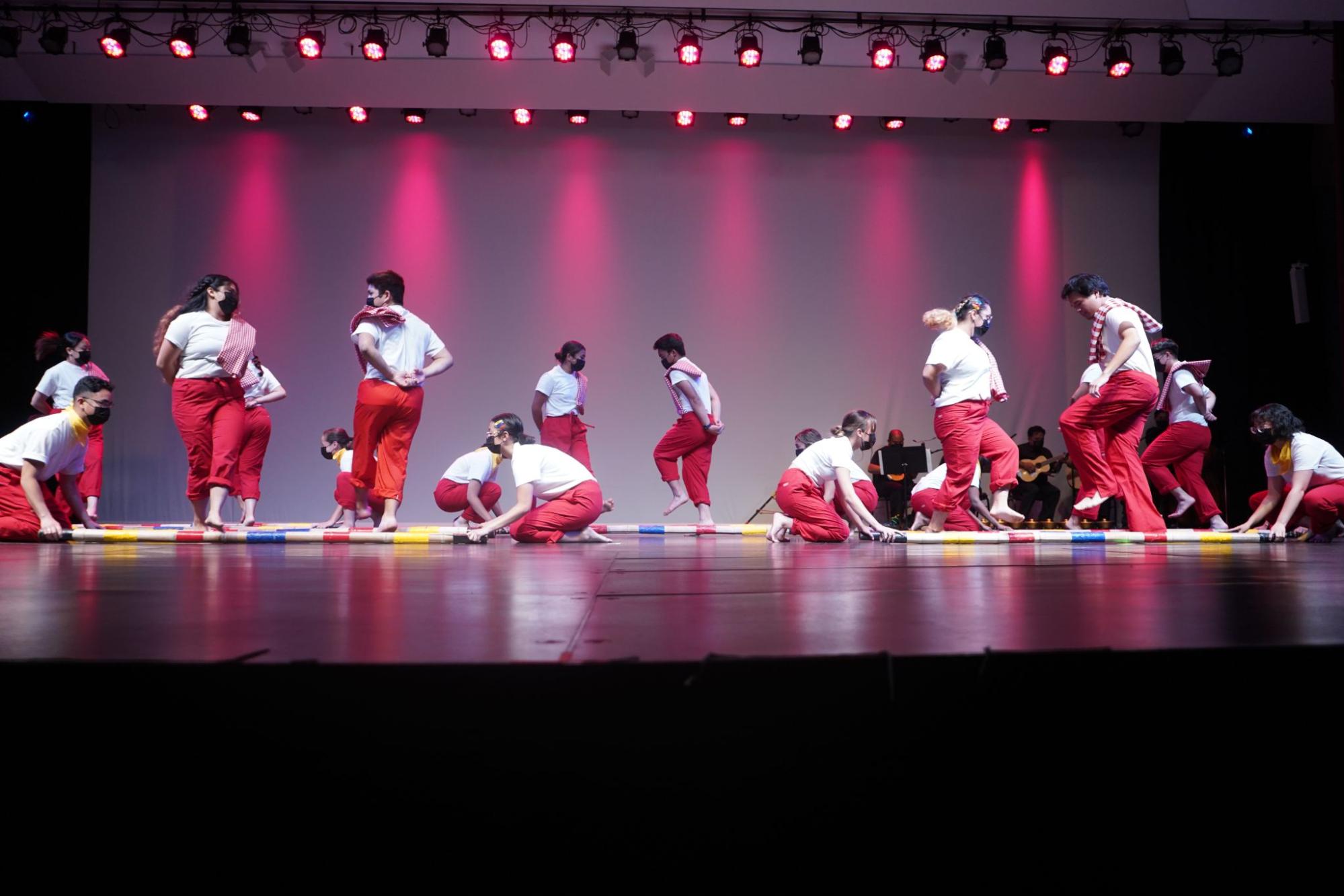Mikey Tupaz ’25 biked past a group of tinikling dancers on Wilbur Field in his freshman year; the dancers invited him to join. A year later, Tupaz is still coming back, and the club has become an integral part of his Stanford experience.
The dancers were part of Kayumanggi, the arts branch of the Pilipinx American Student Union (PASU). Nicknamed “Kayu,” the organization performs dances, skits and musical performances at their annual Pilipinx Culture Night (PCN) and other campus arts events.
Though Kayu is most well-known for its performances of tinikling — a dance from the central Philippines performed with wooden poles moved in coordination with its dancers — they aim to highlight dance styles from throughout the country.
“The Philippines is such a diverse place. Not every region has the same practices,” said Kiara Fufunan ’25, a Kayu co-chair. “I try to stay as authentic as possible, so I do a lot of research.”
Pilipinx dances are traditionally categorized into five suites, each with different cultural and geographic origins. Each year, Kayu tries to teach dances from across the suites, while also making their choreography accessible to those new to the styles. The club also opens traditionally gendered roles to all and embraces non-Pilipinx students.
The club’s sense of inclusion and community is what keeps many coming back. Mikaela Salvador ’23 has been a part of Kayumanggi since her freshman year, and she has seen the membership multiply.
“The most noticeable change is that it has grown so much,” Salvador said. “I think that just says a lot about the community that we’ve cultivated.”
“I think my favorite part of the club is being able to have a space where I can be Pilipinx, because I never really had those types of spaces in high school,” said Tupaz. “I’m able to discuss with my peers about the ethics of various things in Pilipinx culture or talk about the importance of preserving our traditions through dance and music.”
Tupaz is now a co-chair of the club, also leading the revival of Kayumanggi’s a cappella branch, which has been defunct for several years.
“I heard from one of the co-chairs that there used to be this group called PASUpella. And I wanted to bring it back,’” Tupaz said.
Renamed Bonggapella, the group performed most recently at Simbang Gabi, a “Pilipinx traditional Christmas event,” Tupaz said. It has performed from a diverse repertoire including the National Anthem of the Philippines, a Pilipinx revolutionary song and a Pilipinx hit from the ’80s. Bonggapella is putting together a new set for the upcoming PCN, including some modern Pilipinx songs that Tupaz hopes will get listeners excited. The group sings primarily in Tagalog but is considering expanding to other Philippine languages, according to Tupaz.
“Through doing our traditional dances and with traditional music, we’re making a statement that we’re here and we’re not going away, even after 500 years of colonization,” Tupaz said. “Our dances are still here, our traditions are still here. And so I think we’re making a sort of political statement that we’re Pilipinx and we’re proud.”
“We just hope that Kayu will continue to exist and will continue to preserve Pilipinx culture for generations to come,” Tupaz added.
